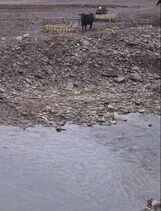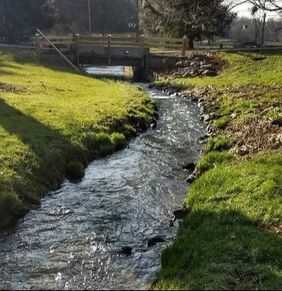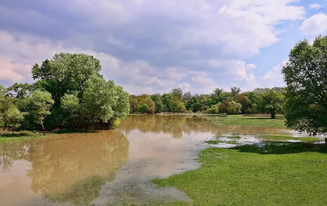CONSERVATION CORNER
A weekly blog for all things conservation
 See, I know how to put in a title that will get your attention. Now that I have it, I will tell you that we may have funds that can help you out. No, we can’t help with any of the everyday things. We are the Conservation District. Our job revolves around clean water. Mine, in particular, has to do with the Ag sector. However, we do have people down here that specialize in stream issues and forestry and such. Streams, as most of you are aware, are a whole different topic and very hard to explain what we can and can’t do. I will leave that to someone else. We live in a very unique area with unique topography. It is complicated.
0 Comments
 By: Jennifer R Fetter; Penn State Extension Having a stream in your yard can be a beautiful addition to your property. It can also be a source of frustration and confusion when things aren't going well. Winter weather and heavy rains this spring my have taken a toll on your backyard stream this year. Or maybe your stream has been slowly eroding for many years. The stream might be getting deeper and deeper. The banks might be caving in, taking your valuable property for a ride downstream. Maybe your foot bridge or fence is about to fall in the stream too. By: Jennifer R Fetter; Penn State Extension
Floods are a nuisance. Whether in the streets, parking lots, or your own front yard – they are no fun. Have you ever wondered why your community floods more now than it used to? Beyond being a nuisance, floods have a significant impact in our communities. Floods cause loss of life as well as damage to buildings and other structures. In 2017 alone, Pennsylvanians suffered nearly $7 million worth of property damage and two people lost their lives as a result of flooding.1 What exactly happens during a rain storm that would lead to a flood? It starts with understanding what options rain water has when it hits the ground. In a forest, up to fifteen inches of rain per hour can be absorbed into the soils – becoming groundwater that fills our aquifers and also provides water for trees and other plants to grow. In our developed communities, most of that rain water becomes runoff instead. There are very few places left for water to soak into the ground, so it rolls downhill off of our rooftops, over streets and sidewalks, until it reaches a low point like a stream or river.  By: Susan Boser; Penn State Extension In Pennsylvania, we get an average of 41 inches of precipitation each year. When it rains or the snow melts, where does this water go? In more natural areas, water is quickly able to infiltrate into the ground. A forested area allows for about 18 inches per hour of infiltration, where an average lawn allows for about 2 inches per hour. Impervious surfaces like pavement and rooftops, offer no infiltration at all. All of the water that doesn't infiltrate flows over the ground, over roofs and through gutters on buildings, into storm drains, and into the nearest waterway –our lakes, rivers, and streams. This is stormwater. |
AuthorsVarious staff at the Bradford County Conservation District Archives
July 2024
Categories
All
|
|
Bradford County Conservation District
Stoll Natural Resource Center 200 Lake Road, Suite E | Towanda PA 18848 Phone: (570)-485-3144 |
